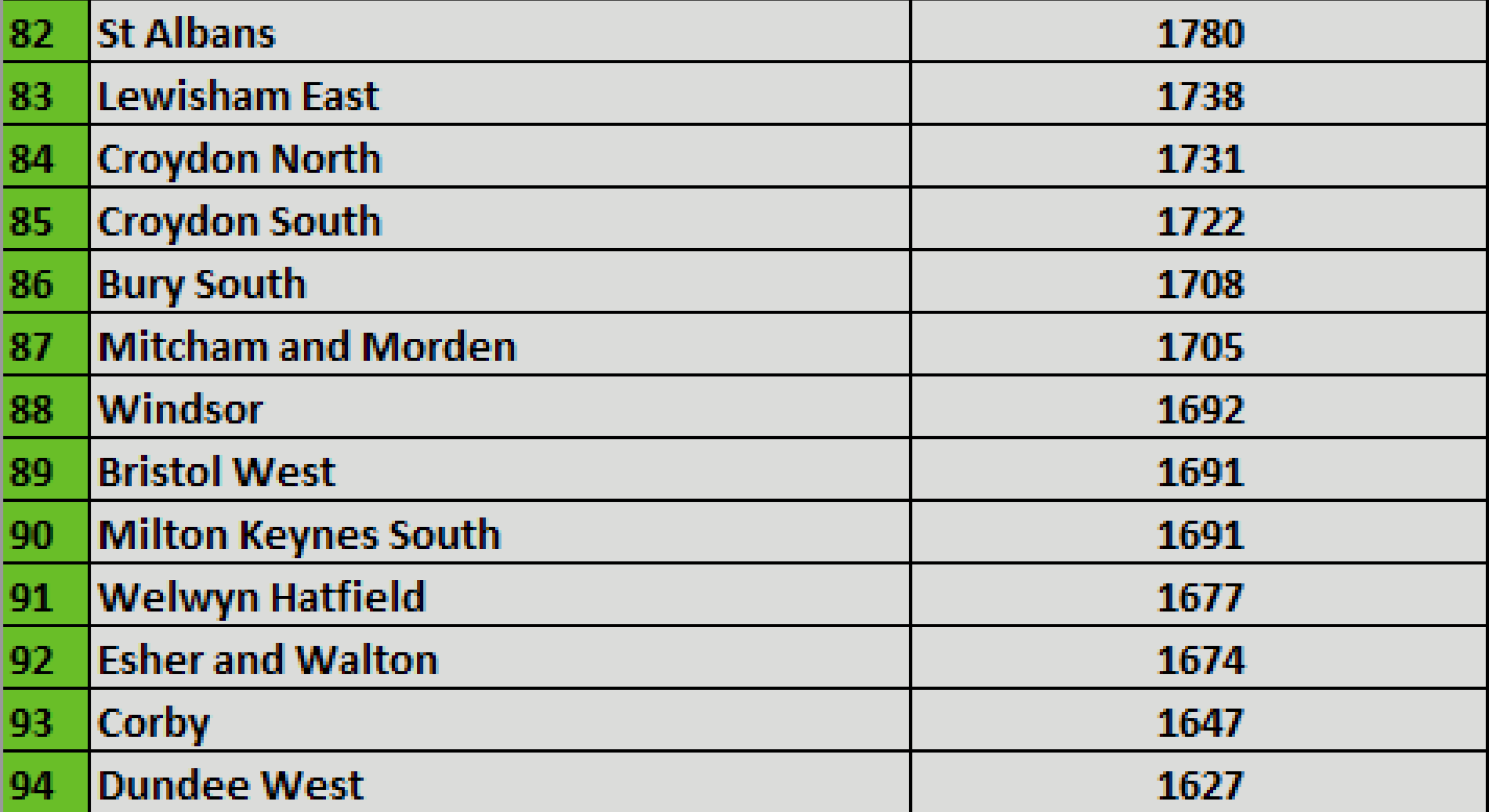The list (click on View Gallery above for the full 100 constituencies) is based on those born on the island of Ireland in the 2011 censuses in Scotland and in England and Wales. The total number of Irish born was 681,952. Several millions more claim Irish links through descent and family ties. Moreover, thousands of people in Britain are reconnecting with their Irish heritage now and 2019 is on course to set a new record for Irish passports applications from Britain.
MPs from the Labour Party were elected in 67 of these constituencies in 2017, with the Conservatives in second place with 25. The Scottish National Party had six and the Liberal Democrats two.
London constituencies loom large in the list with eight out of the top ten. This is not surprising as around a quarter of the Irish born in Britain were living in the capital in 2011.
The vast majority of the top 100 are in urban areas, reflecting Irish migration patterns to cities and towns. You can also trace the route of the M1 motorway, which extends from London to Leeds and was built in large part by Irish labourers who settled along the way, through towns such as St Albans, Luton, Milton Keynes and Northampton.
Other places with large Irish populations on the list are Liverpool, Manchester, Newcastle, Edinburgh, Glasgow, Birmingham and Coventry.
Brent Central in North London, represented by Labour’s Dawn Butler, has the most Irish born at a whopping 5,191 – over 700 more than Hampstead and Kilburn in second place. Appropriately, the Borough of Brent is twinned with South Dublin.
Leading figures from both Labour and the Conservatives will see their constituencies in the top 100 Irish seats. The Shadow Cabinet is well represented: Jeremy Corbyn’s Islington North is fourth highest and his other London–based colleagues Diane Abbott, John McDonnell and Emily Thornberry feature high up the list. The Prime Minister’s seat, Uxbridge and South Ruislip, is 52nd and Foreign Secretary Dominic Raab’s constituency Esher and Walton is 92nd.
Before you ask… the constituency with the lowest Irish–born population is Rhondda in South Wales with only 119.
These figures are now over eight years old and some constituency boundaries may have shifted. Much will have changed by the next census in March 2021, not to mention how different the House of Commons may look by then. Irish in Britain is working with the Office of National Statistics ahead of the census as part of the Diversity Advisory Group.
There is just two and a half weeks to go until 12 December and it is crucial that the Irish voice is heard. We are a sizeable and politically active voting constituency.
The stakes are high: topical issues are Brexit and the consequences for the future constitutional settlement; a new immigration bill; new spending priorities; and localism and representation. These issues are deeply important to Britain’s Irish community – whether you live in the most Irish constituency or the least!
Check out our election resources for the community here.
You can also read questions for candidates here that we have compiled from speaking to our members.
**Remember to register to vote by 11.59pm on Tuesday 26 November.**



